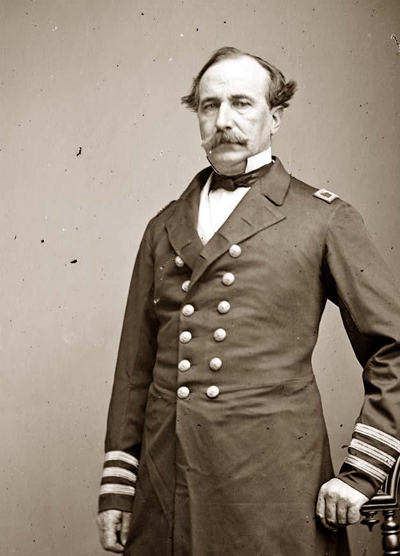Stephen C. Rowan and the
9th New York Regiment
Featured Characters – 1861-1862

Stephen
C. Rowan
Courtesy of the U.S. Library of Congress
Stephen Clegg Rowan was born on Christmas day in 1808 near
Dublin, Ireland. He came to the United States when he was about ten
years old and joined the U.S. Navy in 1826. He was promoted to
lieutenant in March 1837 and then to commander in 1855 for his service
in the Mexican War. As commander of the steam frigate Pawnee, he
participated in the first naval engagement of the Civil War.
As second-in-command to Commodore Louis Malesherbes second-in-command
to Commodore Louis
Malesherbes Goldsborough, Rowan played a major role in Burnside’s
Expedition. Rowan
personally led the
forces that destroyed the Mosquito Fleet.
Promoted to captain, following Goldsborough’s return to Norfolk,
Rowan acceded to command of the naval squadron operating in North Carolina’s
coastal waters.
Commodore Rowan and the 9th New York Regiment led a small
flotilla up the Chowan River to Winton (Hertford County) in an
attempt
to destroy railroad bridges. Upon arrival in Winton on February 19,
1862, Confederate infantry shelled the USS Delaware.
The USS Commodore
Perry
in turn shelled the town. The following day, the town
was shelled
again, leaving several houses and a large amount of military provisions
destroyed. He was rewarded for his offensive operations in
the sounds of North Carolina with promotions to captain and
commodore in
July 1862 and given command of the Powhatan and New
Ironsides, which he
took to operate in Charleston, South Carolina and in the sounds of
North Carolina. After the war, Rowan continued to serve in the U.S.
Navy
and led the U.S. Asiatic Squadron, was Superintendant of the Naval
Observatory, and acted as Chairman of the Lighthouse Board before
retiring from active service in April 1889. Vice Admiral Rowan died in
Washington, D.C., on March 31, 1890.
